
| ||||
|---|---|---|---|---|
 |
 |
 |
 |
 |



























| ||||
|---|---|---|---|---|
 |
 |
 |
 |
 |


























Blériot XI
France — Single-seat monoplane, first aeroplane to cross the English Channel

Archive Photos
Blériot XI (164) c.1994 at the Royal Air Force Museum London, Hendon Aerodrome, London, England
1911 Blériot XI (N99923, c/n 3856) at the Old Rhinebeck Aerodrome, Rhinebeck, NY



1909 Blériot XI (N60094, c/n 56) at the Old Rhinebeck Aerodrome, Rhinebeck, NY

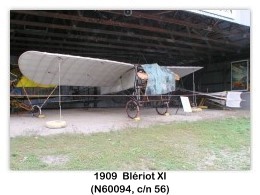




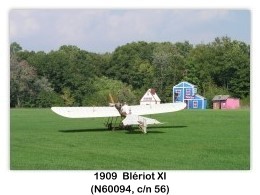


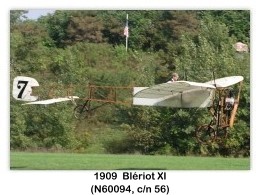
1910 Blériot XI at the Henry Ford Museum, Dearborn, MI

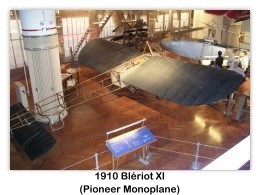
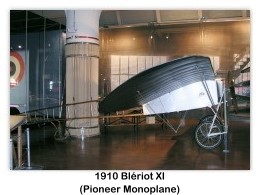
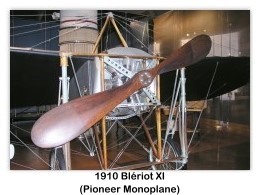
Overview
Designed by Louis Blériot and Raymond Saulnier (of Morane-Saulnier), the Blériot XI was a light and sleek monoplane constructed of oak and poplar. The flying surfaces were covered with cloth. The original XI was designed and built in 1908 and made its public debut at a Paris airshow in December of that year. The aircraft’s original configuration included a R.E.P. engine spinning a four blade metal paddle type propeller which proved to be unsatisfactory. In the Spring of 1909 Blériot decided to use a basically simple 25 horsepower (19 kW) Anzani 3 cylinder W-configuration engine (a central vertical cylinder with the other two at 60° on either side and in the same plane) and a two blade Chauviere wooden propeller with much better results. Blériot could be assured of the Anzani 3W engine running continuously for an hour. The Blériot XI also had some ground-breaking technologies such as castering landing gear, allowing for crosswind landings. Wing warping (instead of ailerons) controlled the plane’s roll. The tail section of the Blériot XI included a horizontal stabilizer with an elevator, and a rudder, but no vertical stabilizer. Unintentionally, Blériot added lateral stability to the plane by leaving the aft section of the fuselage uncovered. This created enough drag to add stability to the aircraft’s flight characteristics.
The Channel Crossing
The plane gained immortality on July 25, 1909 when Louis Blériot successfully crossed the English Channel from Calais to Dover in 36.5 minutes and using an Anzani engine designed by the Italian engineer Alessandro Anzani. For several days bad weather grounded Blériot and his opponents Hubert Latham who flew an Antoinette monoplane and Count de Lambert who brought two Wright Biplanes. That morning, Blériot awoke, albeit in a bad mood, reportedly due to previously scorching his foot on an engine exhaust, to conditions fair enough to fly in. When Blériot took off, Latham’s camp was still quiet; Latham had overslept. Fighting fog and bad weather, Blériot did not even have a compass to guide his crossing. It is said that the Anzani engine made the flight only with the aid of a brief rain shower to cool it off. Letting the aircraft guide itself, Blériot eventually saw the grey line of the English coast. Approaching closer and closer he spotted a French reporter waving the French flag marking the landing spot. Blériot made a very rough "pancake" landing during which the landing gear collapsed, but he walked away, winning the £1000 prize awarded by the Daily Mail.
Further Development
After the successful crossing of the channel, there was a great demand for the Blériot XI. Blériot began to turn his attention from flying to the aircraft manufacturing business. By September 1909 Blériot had received orders for 101 aircraft. Later versions of the Blériot XI used various engines including more powerful Gnome rotary engines and updated Anzani engines. Blériot marketed the aircraft in four categories: trainers, sport or touring models, military aircraft, and racing or exhibition machines. Some notable models in the "Type Onze" series:
Military Use
The first Bleriot XIs entered military service in Italy and France in 1910 and a year later some of those were used in action by Italy in North Africa and in Mexico. The Royal Flying Corps received its first Blériot in 1912. During the early stages of World War I, eight French, six British and six Italian squadrons operated various military versions of the aircraft, mainly in observation duties but also as trainers, and in case of single-seaters, as light bombers with a bomb load of up to 25 kg.
Famous Blériot Monoplane Pilots
Military Operators
Survivors
Specifications (Blériot XI)
General Characteristics
Performance
References